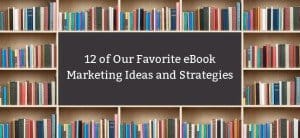How to Maximize your eBook Sales and Downloads

You might be selling an eBook, or just giving one away in exchange for a conversion of some sort, typically to a mailing list. Either way, the goal is the same; get something out of users in exchange for the written word. What can you do to get more of what you want, in exchange for more digital copies of your easily-produced book?
Market More
Marketing is the key to success, though you probably already know as much. When you’re marketing a book, you want to market it on its own merits, not just as “hey a new book from this guy you know from the blog!”
If you’re just starting to write your book, start marketing now. Build up the hype train as much as you can before you’re even ready to publish. Just make sure you’re actually going to finish the book; all too often I see people get entrenched in big writing projects, only to never bring them to fruition. The easiest way to do this is with countdowns and cover graphics.
You should also line up a bunch of interviews and guest posts for the week of your book’s release. Any time you send out a preview copy, ask the reader to write a review and schedule it for the day of release. Link to these reviews from your social media accounts. Send out press releases to niche and industry blogs and publications, as well as preview copies for major agencies who might be interested.
You might also consider an except as a free, no-strings-attached preview. It’s like how Amazon offers a “look inside” that shows a few pages of the book, sometimes randomly chosen from the middle, sometimes right at the start. You could even split-test different excerpts to see which result in more conversions.
Making a Great Book

There’s a lot that goes into making a great eBook, but you need to make sure you cover all the bases. A better eBook means more people will want to check it out based on its own merits, and more people will talk about it because it was great. Make it good enough and people will be citing information from it for months or even years to come.
- Make sure your cover is interesting. If you’re making a marketing book or something of the sort, it’s hard to spice up a few pie charts to make it look cool. Honestly, I recommend Fiverr for this – their graphic designers are surprisingly talented. If you don’t trust Fiverr, try oDesk for graphical freelancers.
- Include imagery in the book. Nothing is worse than trying to read a long digital book with nothing but a ton of text. It blurs together and results in a nice closed PDF and an additional item in the recycle bin, to be deleted next time it’s emptied.
- Offer additional content within the book. Surprise users at the end of it with a special coupon code for a product or service you offer. Some people will convert just to get that code, once they hear about it.
As for content, take a detailed survey from your audience, slowly, over the course of weeks or months. Ask questions and collate the answers. Figure out what issues are of most concern to your users, and consider which of them you can solve with a detailed eBook. When you find a need, and can provide the solution, you have an instant audience.
You might discover that a large part of your topic is already covered in your blog posts. Resist the temptation to just copy your blog posts wholesale. Cover the same subjects with the same information, but dig deeper, go into more detail.
How long should it be? Surprisingly, the average length of the eBooks in the #1 spot on various marketplaces is around 2,500 words. There aren’t many eBooks finding great success at under 2,000 words, but going beyond 10,000 is greatly diminishing returns. The caveat to all of this, however, is that different purposes for books require different word counts to cover. You can’t do a series of 10 in-depth case studies in 2,000 words.
Don’t forget that your eBook is a marketing channel itself, and needs a nicely optimized call to action, ideally spread throughout the book so it’s not just an easily-ignorable final page.
The eBook Life Cycle
Putting the book out for sale or publication is only the first step of the process. Once it’s out, you can do a few things. For example, you can write detailed white papers about the book and circulate them. You can write a series of blog posts covering aspects of the book in lighter detail, and point to your book where the reader can find more information. You can write a bit of sales copy into a powerpoint and post it on Slideshare. You can convert parts of your eBook into a video series.
Most importantly, you can keep your eBook updated. Ideally, you have chosen a subject that changes from year to year, or evolves as each year goes by. Marketing, SEO, these are good subjects because of how much they change.
When you have an audience that likes your book and has subscribed to your mailing list to get at it, you can use that same mailing list to promote the next year’s edition of the book. You can even give previous readers an alternative means of converting. After all, you already have their email addresses.
A Note on Pricing
Pricing your eBook, if you’re trying to sell it, is a very tricky proposition. You may have written a long, powerful masterpiece, but that doesn’t mean people will pay $20 for it. Then again, if you have the reputation and the audience to pull it off, you might be able to charge $100 and call it a great value, and people will eat it up.
More likely than not, however, you’re going to have to price low. People don’t buy eBooks as major investments, they buy them as small $2 gambles. If your book sucks, they aren’t out much money so they don’t care. If it’s good, they got a lot of value and they’ll praise the awesome book they found.
Free is the best price, of course, and a free eBook is going to “sell” more copies than ten eBooks of comparable size and subject at any other price range. Smashwords did an interesting study on price points, however, and shows that if you’re selling for money, the ideal price range is actually between $3 and $4. From there, $2-3 is slightly lower, then $.99, then above $4, and so on increasing in expense and decreasing in conversion rate.
Will this apply to your marketing book? Do you even want to sell it, or are you fine getting email addresses? These are questions you will have to think about as you edge up to release.
 ContentPowered.com
ContentPowered.com





